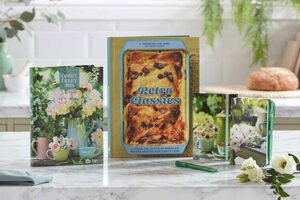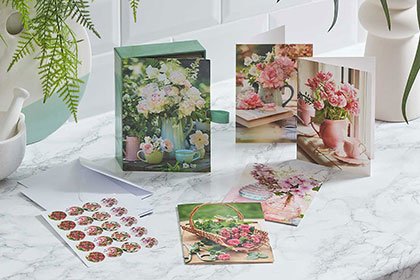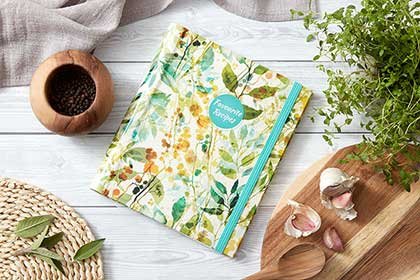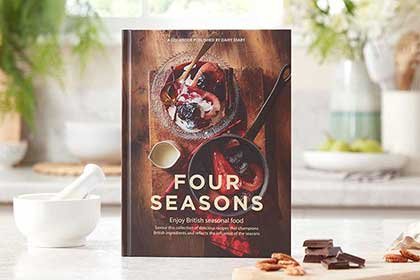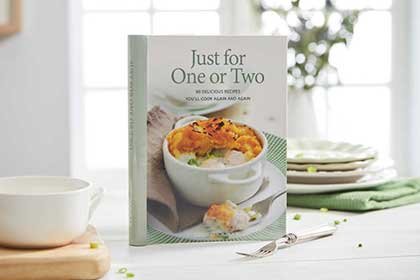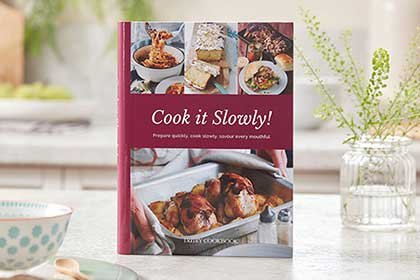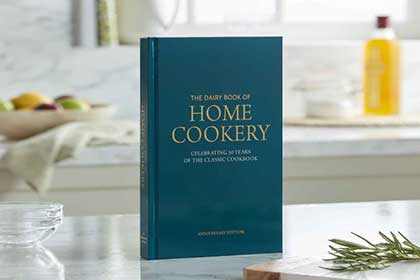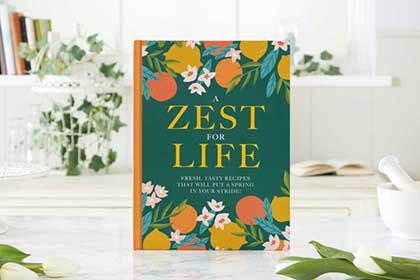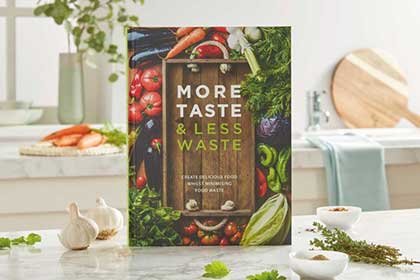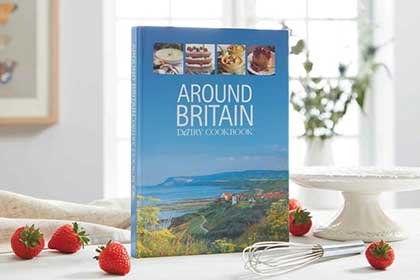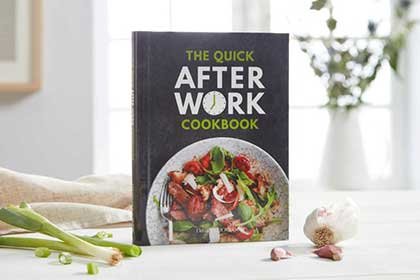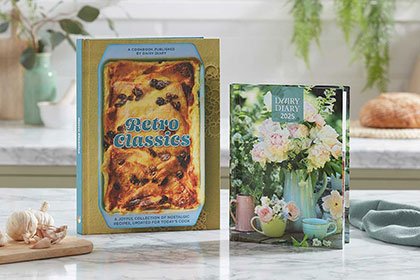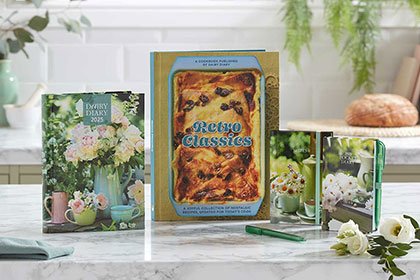Planting bulbs for year round flowers
Easy to grow and so versatile, flowering bulbs are a godsend for busy gardeners. Planting bulbs for year round flowers is simple – wherever you choose to plant them, all you need do is observe a few basic rules.
Isn’t it fantastic to see clumps of snowdrops and crocuses, and even narcissi, coming up together just as winter seems to be dragging on? Late winter/early spring flowering bulbs are a joy to behold, brightening up gloomy days with their whites and yellows, making sunny ones even better with their oranges and purples. From winter aconites through to autumnal cyclamen, for most of the year bulbs can provide the finishing touch.
In order to enjoy these blooms in all their glory, a little forward planning is necessary.
The term ‘bulbs’ also encompasses corms, tubers and rhizomes and the main thing to know is whether they are hardy or tender, because that affects when to plant them and whether you can leave them in the ground or not. Bear in mind that several species, begonias for example, have both sorts, so check before you buy.
Generally, those that flower in the spring are hardy and should be planted before the first frosts, so more or less any time from September to November, depending on the species – crocuses early, tulips later for example. Once they are well rooted, frost won’t harm them, and in fact they need that chilling time in the soil in order to flower at their best.
Hardy bulbs can be left in the ground and will give you a good show for three or four years at least and probably more. After that it’s best to lift them, divide any clumps, discard individuals that are not looking too good and replant the rest. Tulips are the exception. They really need to be lifted and stored every year, or they may never flower again!
Summer-flowering bulbs are usually tender. They can’t tolerate frost so don’t plant them outside until that threat has passed and lift them every year. Clean and dry them off and store them somewhere cool, dry and dark, ready to replant the following spring. Exceptions are hardy lilies and crocosmia, which should be planted in September or October.
During the summer is the time to plant autumn-flowering bulbs, and mostly they can be left in the ground but, as always, check labels and follow instructions.

Planting Bulbs
Squirrels love bulbs! They seem to be especially fond of crocuses and tulips, so if this is likely to be a problem, try netting the area or spreading some sharp gravel on the surface. Failing that, they are, apparently, not too keen on flaked chilli pepper, so you could try sprinkling some of that around.
In the ground:
Prepare a hole, or a trench if you’re mass planting, to a depth of two or three times the height of the bulbs (three or four times for tulips – always the odd ones out!).
Sit each one on its rough underside, so that the narrow end points upwards (a dip or buds for corms, which are flatter than true bulbs). Space them at least an extra bulb’s width apart. For tubers and rhizomes, it’s fine to lay them sideways.
Replace the soil and gently firm down. Then ‘Keep Off the Bulbs’! Mark the area if someone might walk on it.
In containers:
The RHS recommends three parts John Innes No.2 to one part grit if you plan to leave the bulbs in situ for more than one season. Otherwise, using multi-purpose compost instead of John Innes is fine.
Put some broken crocks or stones at the bottom of the pot to aid drainage and plant as before, but not quite so widely spaced. Water regularly.
Once the leaves start to die down, stop feeding, if you are, and water only if dry.
In grass:
Scatter handfuls of bulbs around the area and plant them where they land, either individually or in groups, replacing soil and grass clumps when you have excavated the hole and popped in the bulbs. To save time and too much hard work, you could invest in a bulb planter, a tool specially designed for the job. Several kinds are available, including ones with long handles. It’s best not to cut the grass until the bulbs’ leaves have died back, several weeks after flowering, so this may dictate where you want to cultivate the natural look.
Where’s best for planting bulbs?
Bulbs that originated in woodland, such as bluebells, daffodils and wood anemones, need rich, moist earth and some shade to flourish, while others, such as alliums, prefer lighter soil and full sun. If the soil is dry, some well-rotted organic compost in the planting area will help, and they all grow better if the soil is free-draining, wherever it is!
So long as you take the growing conditions into account, you can grow bulbs almost anywhere, whether en masse, as colourful gap-fillers or to brighten up a shrubby corner. In small groups among herbaceous plants, spring flowerers are a welcome first sign of what’s to come, with the added advantage of the perennials disguising the bulbs’ sometimes unsightly foliage while they die off. The woodland bulbs look delightful scattered in grass, long or short, and around deciduous trees or shrubs where they flower before leaves can deprive them of light. Try summer and autumn flowerers in a mixed border, dahlias, cannas and nerines, for example. Match flowering times with the rest of your display and take height into account – think gladioli or lilies at the back. These may need tying to canes if they grow very tall.
In the green.
This just means the flowers have finished but the leaves persist. You can buy bulbs in the green from your garden centre, especially snowdrops, aconites, bluebells and wood anemones in the spring. Plant each one separately as soon as you can, no more than a week after purchase, making sure the green part of the foliage remains above ground. Planting in the green is also a good way of dividing existing clumps. Once the flowers have died, dig up the clump, ease the bulbs apart and replant them as before. Then next year, you will have a whole new show.

Seasons
When it comes to flowering times, the idea of seasons is fairly fluid. Spring bulbs last into summer, late starters spill over into autumn, winter specialists carry on into spring. Begonias, for instance, flower from summer through to first frosts, around November, and Gladiolus murielae flower from late summer but are at their best from September. Also, different varieties of some species flower at different times. So the list below is, necessarily, a guide only. The mantra is to check the labels before planting bulbs!
Spring-flowerers:
crocuses, narcissi, hyacinths, grape hyacinths, tulips, anemones, dog’s-tooth violets, star-of- Bethlehem, lily-of-the-valley, white-flowered asphodel
Summer-flowerers:
alliums, irises, lilies, gladioli, begonias, dahlias, galtonias, squill agapanthus
Autumn-flowerers:
colchicums, autumn crocuses, nerines, sternbergia
Winter-flowerers:
snowdrops, aconites, cyclamen
Planting Bulbs is a feature taken from the Dairy Diary.
Websites

I look after communications and marketing at Dairy Diary. I’m a busy mum and love home baking and cooking for my family. In my spare time I enjoy visiting the theatre, eating out with friends and exploring the great outdoors!




